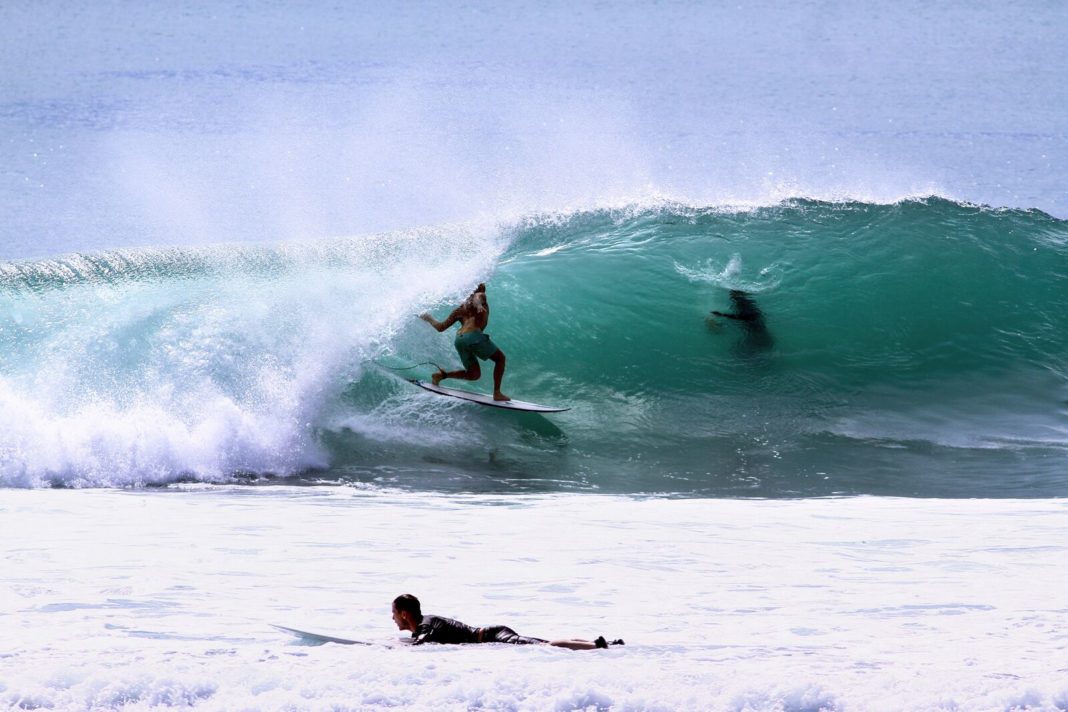There is no surf in Sweden. The Baltic only ever gets wind chop, and there isn’t enough distance for swells to build up for decent waves to even break. Besides, it’s too cold to surf, and in the winter the Baltic completely freezes over. Anyone who says they surf in Sweden is delusional.
Well, say hello to a delusional Swede named Tim Latte. Yep, just like the coffee. Even in Sweden, Latte means milk coffee.
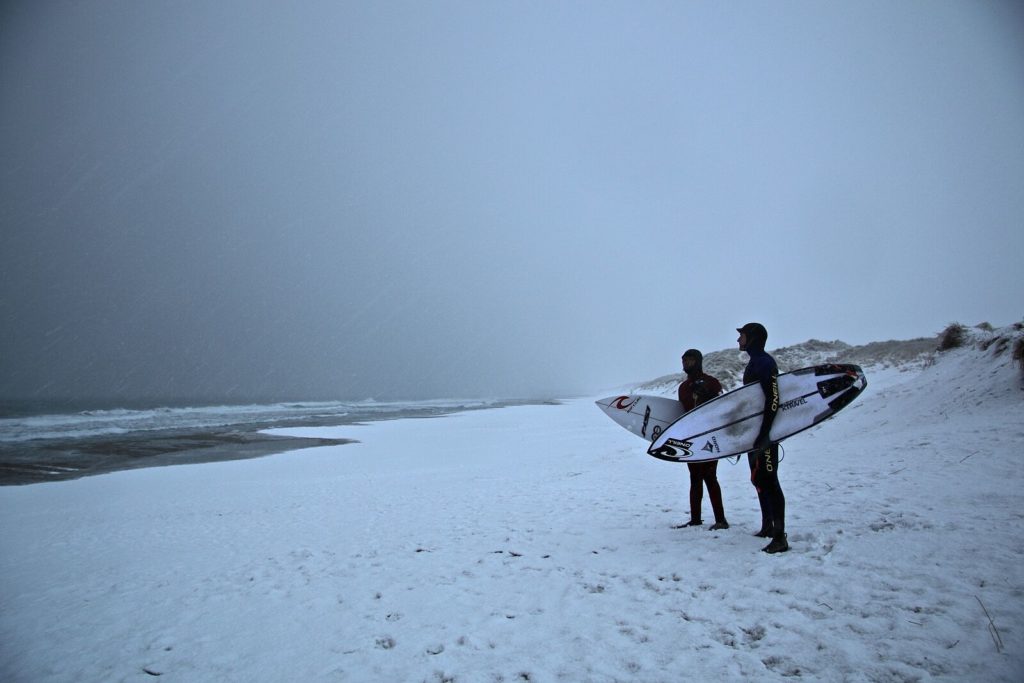
In a country where you really do get a medal for turning up (no, seriously) Tim is an outlier. A Swede who is an individual is going to be controversial.
In Tim’s words, “I was 12 when I started surfing. I wasn’t good at any other sport, not really a team player. Because I was always that lazy kid in your team who brings everyone else down (laughs).”
After his brief flirting with team sports, Tim sought out more individual pursuits, like dancing (stay with us!) and testing out his tic tac game. Tim booms, “I tried dancing for a while. A bit of jazz funk… but I was the only dude in tights!”
Finally, it was a young bird, not of the feathered variety that Tim wanted to impress. She only liked surfers. So fuelled by the overpowering urges of a prepubescent teen, his interest in surfing began.
“I told Dad I wanted to surf. We went on this trip to the Canary Islands and my dad just gave me a board and said get out there,” beams Tim.
Tim took to surfing with ease, managing to stand up on his first wave (at age 12) and before the end of his first session, he could trim along the foam. He had finally found a sport that was all about him – and which also assured a high frequency of lusty encounters with the opposite sex – so Tim became a surfer.
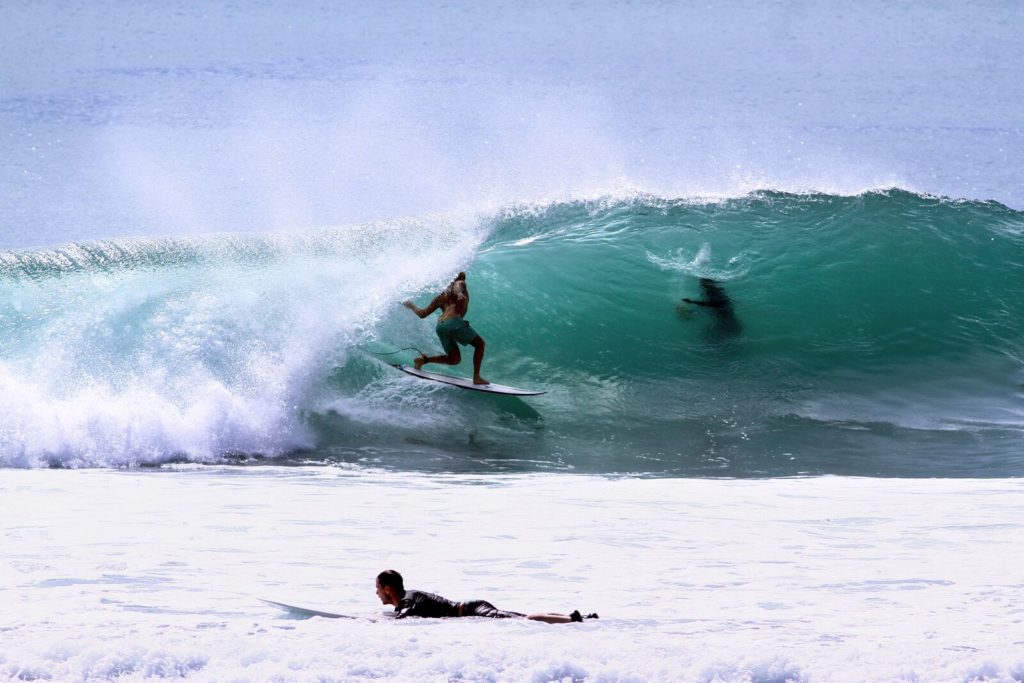
The idea that the greatest surfers on the planet need come from wave-rich hometowns is a bit of a fallacy. Kelly Slater comes from a mushy two-foot beach break. With that in mind and without regular access to quality waves, Tim had to think outside the box in order to improve as a surfer.
“You have to be creative when your local waves are rare. Of course, to develop as a surfer you have to do it often. But if you can’t do it often for real, then you have to find alternatives.”
During the summer, Tim was behind his dad’s boat, riding the wake, practicing his turns. When it got too cold he would use a Carver Board, which enabled him to get his legs pumping and surfing up concrete walls around his home town.
His final solution for practicing without waves was to hide out at the communal pool in his apartment complex until it was closed for use and put his board on the edge of the pool, then run and jump onto it like a skim board, gathering enough speed to do one turn.
So, with a total of 30-weeks of surfing under his belt, plus a bit of wake surfing, concrete carving and pool practice sessions over a period of about three years, Tim was riding to a level that saw him get sponsored. Which then bought about a trip to Indonesia at the age of 15.
“When I was 15, I came home one day and my mum told me: Hey Tim you are going to the Mentawais.”
These crucial words would be a turning point in Tim’s surfing.
“Reflecting on that trip, my skill level just jumped by probably three steps. In good waves you figure out how important a bottom turn is; landing your first air; doing your first tail bust; you get your first proper Indo barrel and everything like that. You are just constantly learning, that is how good Indonesia is for your surfing.”
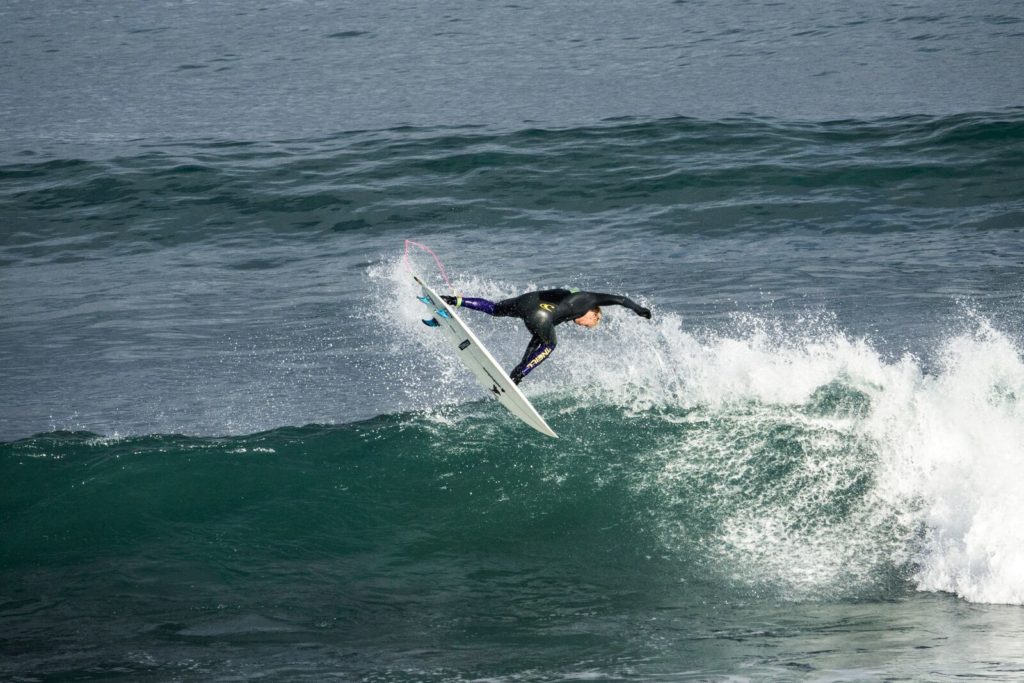
Since that trip Tim has been on the aspiring pro-surfer’s journey. Putting on the contest rashie for WQS events in Europe; returning to Indo for a few more tube-rich days; and more recently, winning the Swedish Championships and chasing cold water waves.
Finding support from sponsors is proving to be difficult for Tim though, with European companies always more likely to go with sponsoring riders from more established surfing markets in France, Portugal and Spain.
“I think there is a cultural bias that has stopped many potential sponsors from embracing the idea of a Swedish surfer joining their team.”
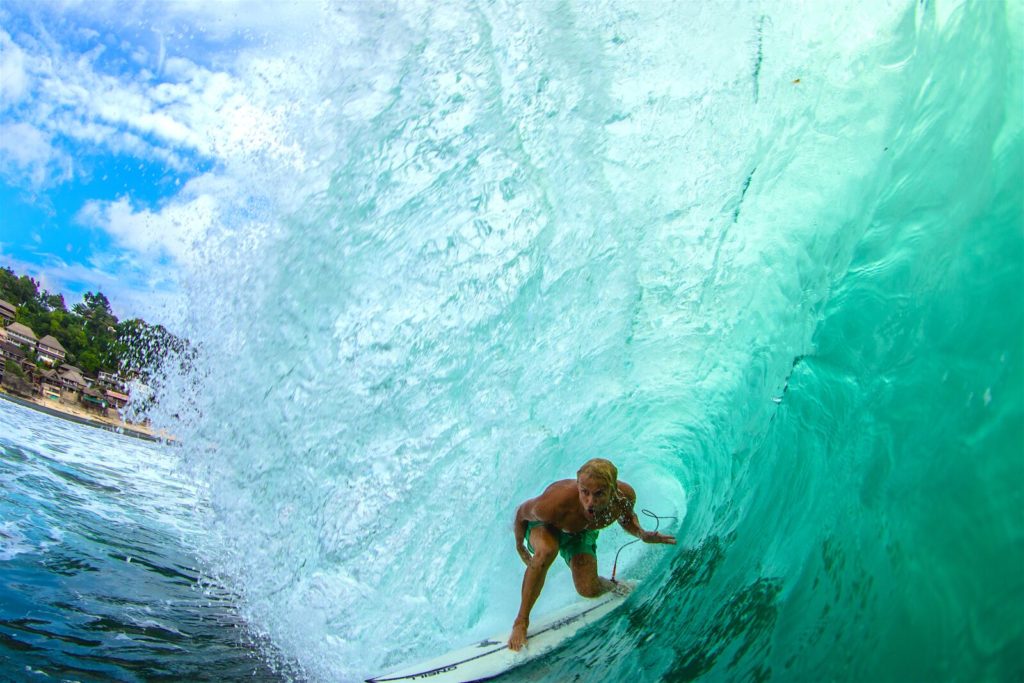
“I mean, if a sponsor has a French, a Portuguese, and a Swedish surfer throwing a CV at them, the first one to get the sponsor is going to be the French, then the Portuguese, and then finally the Swede. It isn’t racist at all; it is just this bias that everyone does have because, ‘there is no surf in Sweden’.
This has held me back in some ways, but the more I deal with it the more that I look at it as a competitive advantage for me that I simply have to sell better.”
“Surfing is a business more than a sport these days, and you need to find new ways to stand out in the business. At the end of the day, Swedes are travelling people and, if I can position myself as a professional surfer who can inspire people to travel to unique places, then I think that I will be very valuable to the Nordic sponsors.”
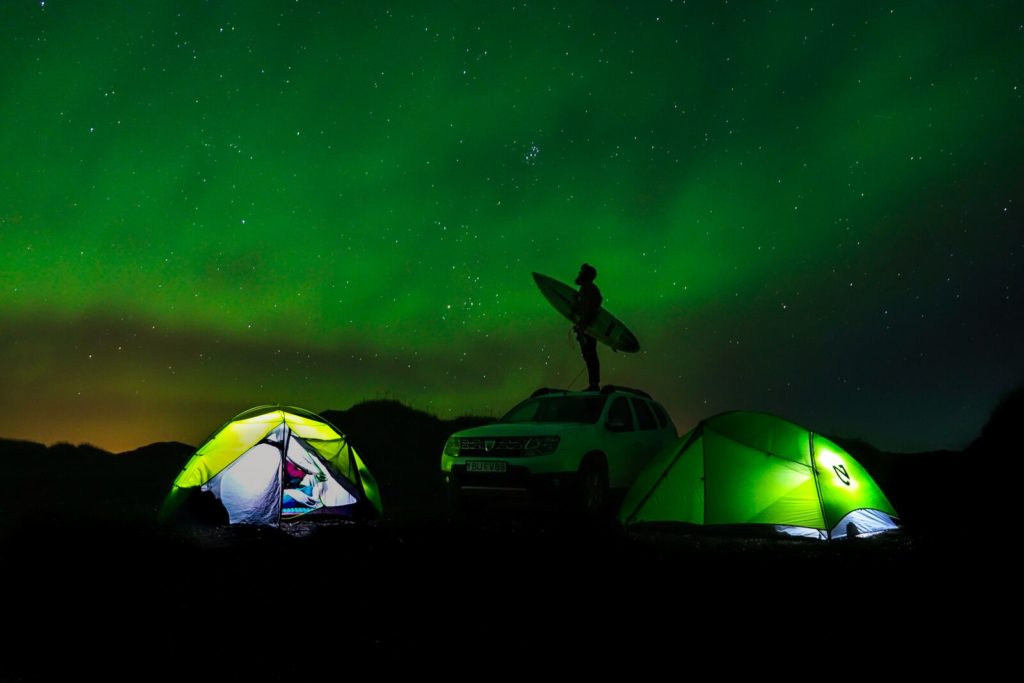
If Tim can become the surfer he is today by practicing cutbacks in a local pool, then we’re sure that he’ll find the right sponsors to support his cold water aspirations.
Beating his own path (and the odds), he is forging a career aimed at inspiring others to get outside and into the cold water, rather than chasing the WQS dream and burning out in the process.
By Josh Kirkman



